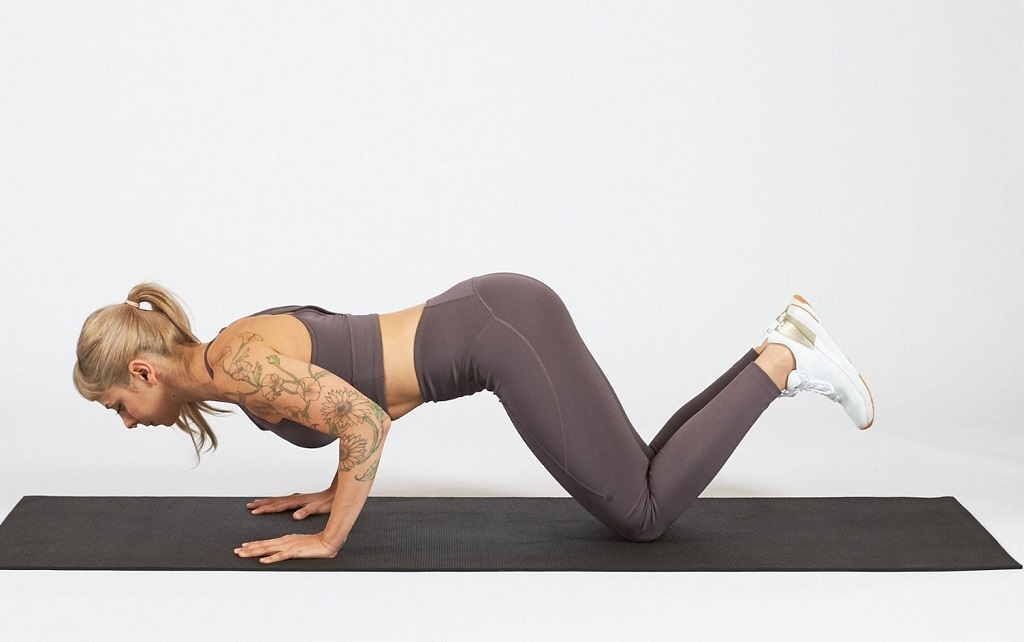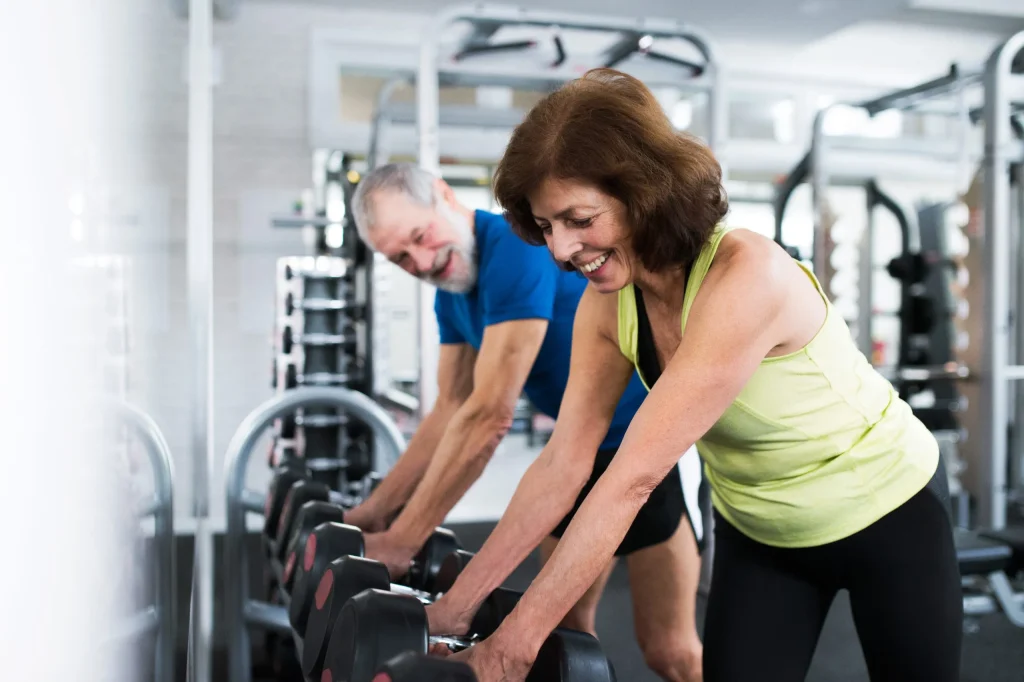The Calorie-Burning Contenders
Both HIIT and long-distance cardio elevate your heart rate, a key factor in burning calories. Here’s a breakdown of their approaches:
-
HIIT: Think of intense bursts of activity followed by short rest periods. This pushes your body to its limit, burning a significant amount of calories during the workout. The afterburn effect, also known as EPOC (Excess Post-exercise Oxygen Consumption), further elevates your metabolism for hours after the workout, burning additional calories.
-
Long Distance Cardio: Maintains a steady, moderate pace for an extended period. While it burns calories throughout the exercise, the afterburn effect is generally less pronounced compared to HIIT.
The Fat-Burning Face-Off
Studies suggest HIIT might have a slight edge in fat burning. Here’s why:
-
Intensity Matters: HIIT’s high-intensity nature utilizes both stored carbohydrates and fat for fuel. During intense bursts, your body readily taps into carbohydrates for quick energy. However, as the workout progresses and your body adapts, it starts relying more on fat stores to sustain the effort.
-
EPOC Advantage: The afterburn effect of HIIT keeps your metabolism elevated for hours after exercise, burning additional calories, some of which may come from fat stores.
The Nuances of Fat Loss
It’s important to remember that fat loss is a multi-faceted battle. While HIIT might have a slight edge in calorie burning, factors like overall diet and exercise volume play a crucial role. Here’s some additional insight:
-
Diet is King: Regardless of your exercise choice, a healthy diet with a calorie deficit is essential for fat loss.
-
Total Calories Burned: Long-distance cardio often burns more total calories during the workout due to its extended duration. If calorie expenditure is your primary concern, consider the total workout duration.
-
Muscle Matters: Building and maintaining muscle mass increases your basal metabolic rate (BMR), the number of calories you burn at rest. Both HIIT and strength training can be effective for building muscle and contributing to overall fat loss.
Motivation Matters Most
The most effective workout is the one you’ll consistently stick with. Here’s where the battle gets interesting:
-
HIIT: Quick and Effective: HIIT workouts are typically shorter, making them ideal for busy schedules. The high-intensity nature can also be mentally stimulating, keeping things interesting.
-
Long Distance Cardio: The Mental Escape: Running, swimming, or cycling can provide a meditative state, reducing stress and improving mood. This mental benefit can translate into better exercise adherence.
Finding Your Fitness Fit
The best approach is to choose the method you enjoy most. Consistency is key, and sticking with a workout you find engaging is crucial for long-term success. Here are some tips to find your fit:
-
Experiment: Try both HIIT and long-distance cardio and see which one you find more enjoyable.
-
Mix it Up: Don’t be afraid to incorporate both methods into your routine. HIIT can provide a quick calorie-burning boost, while long-distance cardio offers a mental escape.
-
Find a Workout Buddy: Having someone to work out with can increase motivation and accountability.
Beyond the Burn: Additional Benefits
Both HIIT and long-distance cardio offer a range of health benefits beyond fat-burning:
-
Improved Cardiovascular Health: Both methods strengthen your heart and improve overall cardiovascular health.
-
Increased Endurance: Long-distance cardio specifically helps build endurance, while HIIT can improve your ability to recover from short bursts of intense activity.
-
Mood Boost: Exercise releases endorphins, natural mood elevators that can combat stress and anxiety.
Making an Informed Choice
Ultimately, the choice between HIIT and long-distance cardio depends on your individual goals and preferences. Consider these factors:
-
Time Commitment: HIIT workouts are typically shorter, while long-distance cardio sessions can last longer.
-
Fitness Level: If you’re a beginner, start with moderate-intensity cardio and gradually increase intensity. HIIT can be very demanding, so consult a doctor before starting if you have any health concerns.
Long-Distance Cardio: Going the Distance
For those who enjoy the meditative and mood-boosting aspects of exercise, long-distance cardio offers a compelling option. Here are some additional considerations for long-distance enthusiasts:
-
Finding Your Pace: Aim for a moderate-intensity level, where you can hold a conversation but breathing becomes slightly labored. This “sweet spot” maximizes fat burning while allowing for sustained exercise.
-
Variety is Key: Explore different activities like running, swimming, cycling, or even dancing. This keeps your workouts interesting and reduces the risk of overuse injuries.
-
Fueling Your Journey: For longer sessions, consider consuming carbohydrates during exercise to maintain energy levels and prevent muscle breakdown.
HIIT: The High-Intensity Hustle
If you crave a quick and intense workout, HIIT could be your perfect match. Here’s how to maximize your HIIT experience:
-
Intensity is Key: Push yourself during the work intervals, aiming for 80-90% of your maximum heart rate. This is where the magic of calorie burning happens.
-
Rest Matters: Recovery periods during HIIT are crucial. Allow your body sufficient rest to replenish energy stores and prepare for the next burst of activity.
-
Listen to Your Body: HIIT can be demanding. Don’t push yourself to the point of pain. Start gradually and increase intensity as your fitness level improves.
HIIT Variations:
The beauty of HIIT lies in its versatility. Here are a few examples to get you started:
-
Bodyweight Workouts: Burpees, jumping jacks, mountain climbers, and lunges are excellent options that require no equipment.
-
Equipment-based HIIT: Utilize tools like kettlebells, jump ropes, or medicine balls to add variety and challenge.
-
Circuit Training: Design a circuit that alternates between strength training exercises and high-intensity cardio bursts.
Safety First
Always prioritize safety when exercising. Here are some essential precautions:
-
Warm-up and Cool-down: Prepare your body for activity with a dynamic warm-up and cool down properly to reduce injury risk.
-
Listen to Your Body: Pay attention to any pain or discomfort. Stop exercising and consult a doctor if necessary.
-
Hydration is Key: Drink plenty of water before, during, and after your workout to stay hydrated.
Related: How Do You Know If Meditation Is Working?
The Final Round: It’s a Draw
When it comes to fat burning, both HIIT and long-distance cardio have their strengths. The “winner” truly depends on your individual preferences and lifestyle. Here’s the takeaway:
-
Enjoyment is Key: Choose the workout you find most enjoyable. Consistency is the key to long-term success.
-
Listen to Your Body: Alternate between HIIT and long-distance cardio or find a combination that works for you.
-
Focus on Overall Health: Diet and overall activity play a crucial role in fat loss and overall well-being.
Remember, the best exercise routine is the one you get up and do consistently. So lace up your shoes, crank up the music, and find the workout that fuels your fitness journey!




